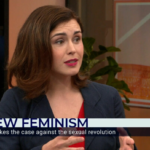A review of Work-Lifestyle Choices in the 21st Century. By Catherine Hakim.
Oxford University Press, 2000.
There are many important issues that arise when discussion about women in the workplace takes place. Many questions come to mind, such as: Why do women enter the paid workforce? Are careers and parenting compatible? How much of a role does economic conscription play in dual income families? Should public policy seek to enforce some ideal for women in the workplace? Do women really have genuine choice as to work and home preferences?
Catherine Hakim, a Senior Research Fellow at the London School of Economics has written extensively on these and related questions. In her newest book, Work-Lifestyle Choices in the 21st Century, she approaches this broad and detailed subject by means of what she calls “preference theory”. In a nutshell, this theory holds that contemporary western women are not at all united on these issues. Instead, they have a wide variety of preferences, preferences which must be taken into account by policy-makers.
Hakim offers four main tenets of preference theory:
First, she says there have been five historical social changes which have led to a new scenario for women and their work choices:
a. The 60’s contraceptive revolution which gave women control over their fertility.
b. The equal opportunities revolution, giving women equal access to the labour market.
c. The rise of white-collar work, which tends to be more appealing to women.
d. The creation of jobs for secondary work, where career is not the number one priority.
e. The rising importance of preferences, choices and lifestyle options in affluent societies.
Second, women have many different preferences when it comes to work. In particular, there are three idealised preferences most women have:
-Home centered preferences (about 20% of women).
-Work centered preferences (about 20%).
-Adoptive (a combination of work and home) preferences (about 60%).
Third, these different preferences result in conflicts between different types of women. Men, on the other hand, are much more homogenous in their preferences, and thus have an advantage over the heterogeneous women. As a result, for many women, much conflict tends to arise because of these diverse preferences.
Fourth, the diversity of women’s preferences means that public policy needs to be more diverse, catering to the different needs and desires of women, instead of trying to aim for just one approach.
Using this four-fold approach to questions of female work and lifestyle choices, she offers an incisive and thought-provoking analysis which will offer much to all sides of the debate. That is, both conservatives and feminists may need to readjust their agendas, in the light of this growing body of research.
One of the major conclusions of this research is that women clearly do not have one view on the issue of work and home, but many. Therefore, social policy should be flexible enough to meet the various preferences women in fact have. Policies should not seek to force women into some predetermined mould. Thus, if some women want to stay at home, and eschew the paid workplace, then government policies should recognise and accept those preferences. Indeed, research seems to indicate that, for various reasons, only a minority of women will want, and will reach, the top positions of power in the workforce.
Contrary to much feminist rhetoric, many women prefer either part-time work or no paid work at all. Not every woman is chafing at the bit to flee the home for a life as a career woman. Certainly some are however. So government policy should cater for such divergence of interests and desires. And research makes it clear that this diversity of preferences will remain strong, despite the expectations (or maneuvering) of feminists.
Thus if governments want to really honour the diversity of women in their choices, they should create policies which maximise choice, and forego coercive policies designed to create a pre-determined end. In this respect Hakim suggests that governments might adopt a kind of home-makers’ allowance, available to all women. This should be available to all mothers for three years or more after each birth, irrespective of their employment record.
Says Hakim, “Such an open-ended scheme would leave mothers free to decide whether to use the money as a replacement for lost earnings while they stay at home to raise their child, as a salary for this alternative occupation, or as a subsidy for any childcare services that they use to enable them to return to part-time or full-time employment. The new home-care allowances introduced in Finland and France begin to offer this kind of neutral, open-ended benefit instead of the benefits with social engineering aims that promote particular choices and behaviours. Flexible, open-ended policies and benefits can be designed if policy-makers decide to move in that direction. The challenge for politicians and policy-makers in the 21st century is to design policies that are neutral between the three preference groups. The challenge for policy researchers is to design research projects that assist and inform this process.”
The importance of Hakim’s thesis cannot be underestimated. The “one-size-fits-all” approach of most governments to questions of women and work are simply unworkable, restrictive and coercive. They just do not take into account the many real differences women have on the issue. And given that the one size pushed is usually that of the feminist version of things, the sooner we jettison such an approach, the better. Hakim’s work shows us that women, like men, are not all of one piece, not all cut from the same cloth. There is a wide-array of diversity and differences of opinion about the relationship between, work, home, family, and other choices. Governments need to respect such diversity. This book is an important contribution to that end.
[940 words]




















It could be that women do not elect other women in politics mainly because as Hakim said women are heterogeneous and are not united in a block. Women still do not thrust other women’s potentials but regard them as most suitable as home makers and child bearers.
Vania Tabone